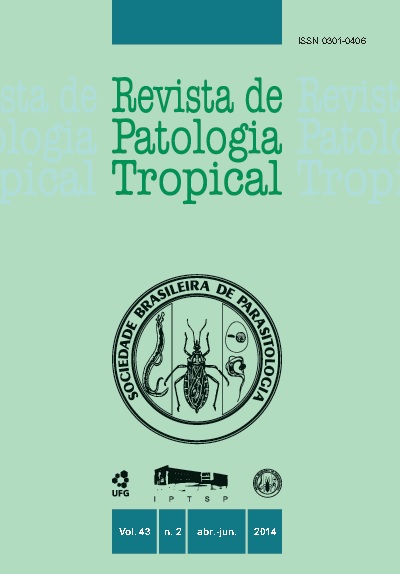SCREENING OF FECAL SAMPLES FROM ASYMPTOMATIC CHILDREN, FOR NOROVIRUS DETECTION, USING A THIRD GENERATION ENZYME IMMUNOASSAY COMMERCIAL KIT
DOI:
https://doi.org/10.5216/rpt.v43i2.31111Keywords:
Asymptomatic children, enzyme immunoassay, Norovirus, sensitivity, specificity.Abstract
Norovirus is the leading cause of non-bacterial acute gastroenteritis outbreaks worldwide. Recently, third generation Enzyme Immunoassay (EIA) commercial kits have been developed, and controversial results have been obtained by different studies regarding the sensitivity and specificity of these assays. Therefore, the aim of this study was to test 60 fecal samples, previously tested as positive by RT-PCR for caliciviruses (40 norovirus-positive and 20 sapovirus-positive samples), for qualitative determination of genogroup I and II noroviruses by a commercial EIA kit (RIDASCREEN® Norovirus (C1401) 3rd Generation, R-Biopharm, Darmstadt, Germany). The samples were obtained from 30 children aged less than five years, mostly asymptomatic, who attend a day-care center in Goiânia, Goiás, Brazil. The results conferred a positivity rate for NoV of 35% and a specificity rate of 100% for the EIA, when compared to the RT-PCR. The test also failed to detect samples that were positive for GI.1 and GI.4 norovirus. The presumably lower viral load of asymptomatic children might be related to the poor sensitivity. Our results reinforce the notion thatscreening of samples by molecular assays, especially of samples that might have a low number of viral particles such as those obtained from asymptomatic patients, should not be replaced by the use of EIA kits.
Downloads
Downloads
Published
How to Cite
Issue
Section
License
The manuscript submission must be accompanied by a letter signed by all authors stating the full name and email address, confirming that the material has not been published or is under consideration for publication elsewhere, and agreeing to transfer copyright in all media and formats for Journal of Tropical Pathology. The authors will not be paid for published articles. They are solely responsible for the content of those articles, even if the Editor holds the right to adjust them to the norms of the journal.
The reviewers will not be paid for the peer review process.

